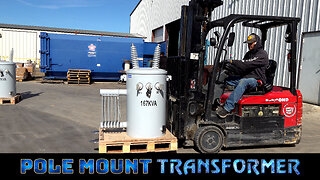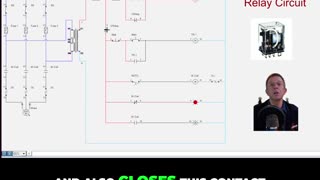Inside the Buchholz Relay: How it Works and How it's Built || Tach engineer || 2023
Buchholz Relay is an essential component in transformer protection systems that is designed to detect and respond to faults and other issues in oil-filled transformers. It functions by detecting the buildup of gas in the oil of the transformer and responding appropriately when the gas production exceeds a certain limit.
The relay consists of two main components: the gas collecting chamber and the mercury switch. The gas collecting chamber is located at the bottom of the transformer tank and is filled with oil. When gas bubbles rise to the top of the chamber, the mercury switch tilts, triggering an alarm or shutting down the transformer to prevent further damage.
Buchholz Relay is highly effective in detecting a wide range of faults in transformers, including insulation failure, short circuits, overloading, and other issues that could lead to serious damage or safety hazards. Its reliable and accurate performance has made it a vital tool in electrical engineering, ensuring the safety and efficiency of power grids and other electrical systems.
-
 4:23
4:23
techengineer09
1 year agoWhat is Buchholz Relay? And what is the work in principle Buchholz Relay? || Tach Engineer || 2023
32 -
 2:34
2:34
techengineer09
1 year agoWhy Every Transformer Needs a Buchholz Relay || Tach Engineer || 2023
5 -
 12:32
12:32
Electrical Troubleshooting
1 year ago $0.03 earnedHow to troubleshoot a Relay
14 -
 15:36
15:36
VOGMAN
1 year agoWhat are Relays? How do RELAYS work? How to use 4 pin and 5 pin Relays - an easy TUTORIAL by VOGMAN
48 -
 2:17
2:17
Tesla Harmonics
6 months agoIndustrial Motor Control Session 8 Electromechanical Relays
8 -
 3:08
3:08
Electrician U
3 years agoSHORTS - What Are Relays and HOW DO RELAYS WORK?
37 -
 13:11
13:11
HVAC for beginners
1 year ago $0.02 earnedhow does a contactor work
116 -
 1:20
1:20
Larson Electronics - American Made and Manufactured Industrial Lighting and UVC Products
6 months ago167 KVA Overhead Distribution Transformer, Pole Mount
2 -
 3:09
3:09
Tesla Harmonics
3 months agoWhat is a Master Control Relay and how is it used in motor control?
24 -
 0:31
0:31
Larson Electronics - American Made and Manufactured Industrial Lighting and UVC Products
2 years agoControl Transformers to Protect Your Machines and Electronic Equipment
3